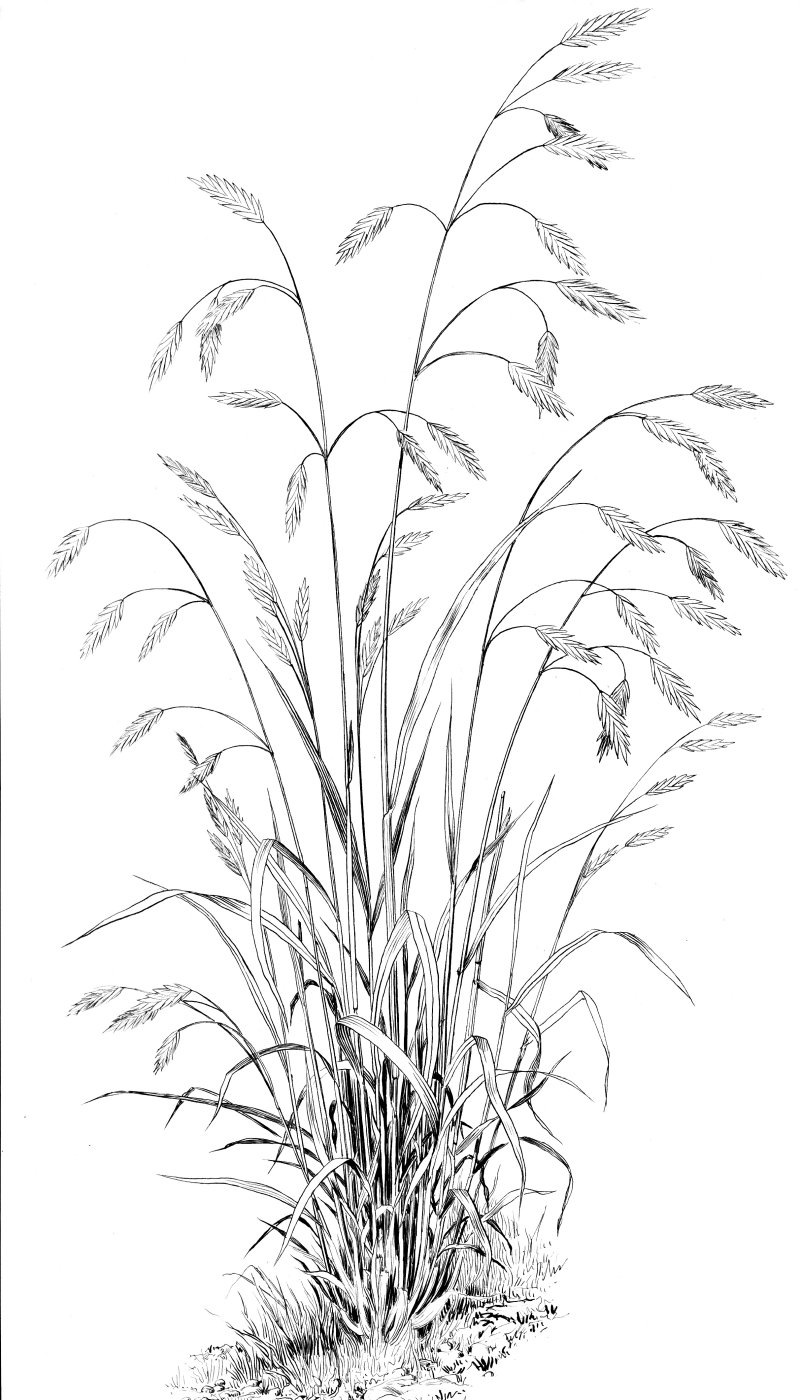
Bromus catharticus Vahl. Rescue Brome Habit: Stout, more or less tufted annual (winter annual). Culms: Erect or somewhat spreading, 10-60 cm. tall, glabrous retrorse-pubescent above the nodes. Blades: Flat, narrow, glabrous or sparsely pilose, 3-15 cm long, 1.5-4 mm wide. Sheaths: Pilose-pubescent, sometimes glabrous above. Ligule: Membranous, 2-5 mm. long, somewhat pubescent, whitish. Inflorescence: Panicle 15-25 cm. long, somewhat contracted; branches ascending or rarely spreading, naked at the base (reduced to a raceme in small plants). Spikelets: Green, sometimes tinged with purple, strongly flattened, 2-3.5 cm. long, 5-9 mm. broad, 4-11 flowered; often drooping; flowers perfect or the upper ones imperfect. Glumes: Keeled, about 1 cm. long, persistent, narrow, unequal, 1st glume 5-7 nerved and 7.5-10 mm long, 2nd glume 7-9 nerved and 8-12.5 mm long, smooth or slightly scabrous, awnless or awn less than 2 mm. long. Lemmas: Broadly lanceolate, keeled, acute, closely overlapping, including the short awn 12-17 mm. long, nearly glabrous to strongly scabrous; awn 0.2-3 mm. long, dorsal, inserted just below the 2-toothed apex. Palea: About two thirds as long as the lemma, 2-keeled. Caryopsis: Furrowed, 3-6 mm. long, adhering to the palea. Habitat: Fields, prairies and waste places. April-June. Growth period: Winter annual with flowering in May and June. Remarks: Naturalized Synonyms: Bromus brevis Nees ex Steud. Bromus haenkeanus (J. Presl) Kunth Bromus unioloides Kunth Bromus willdenowii Kunth Festuca unioloides Willd.